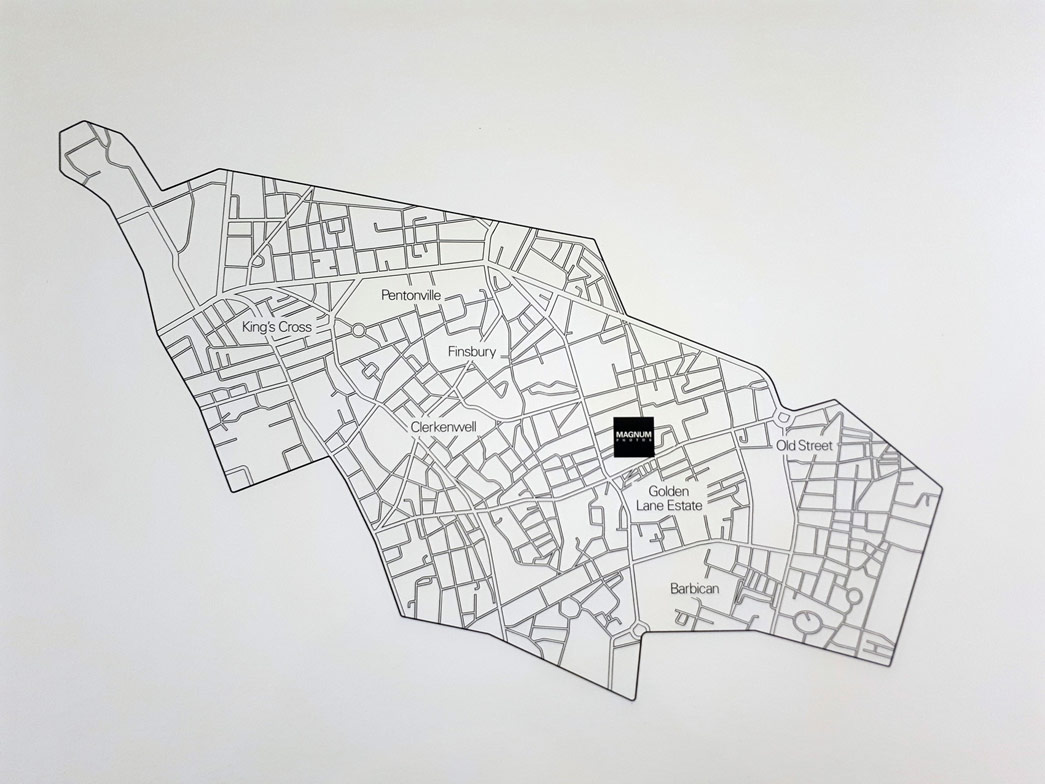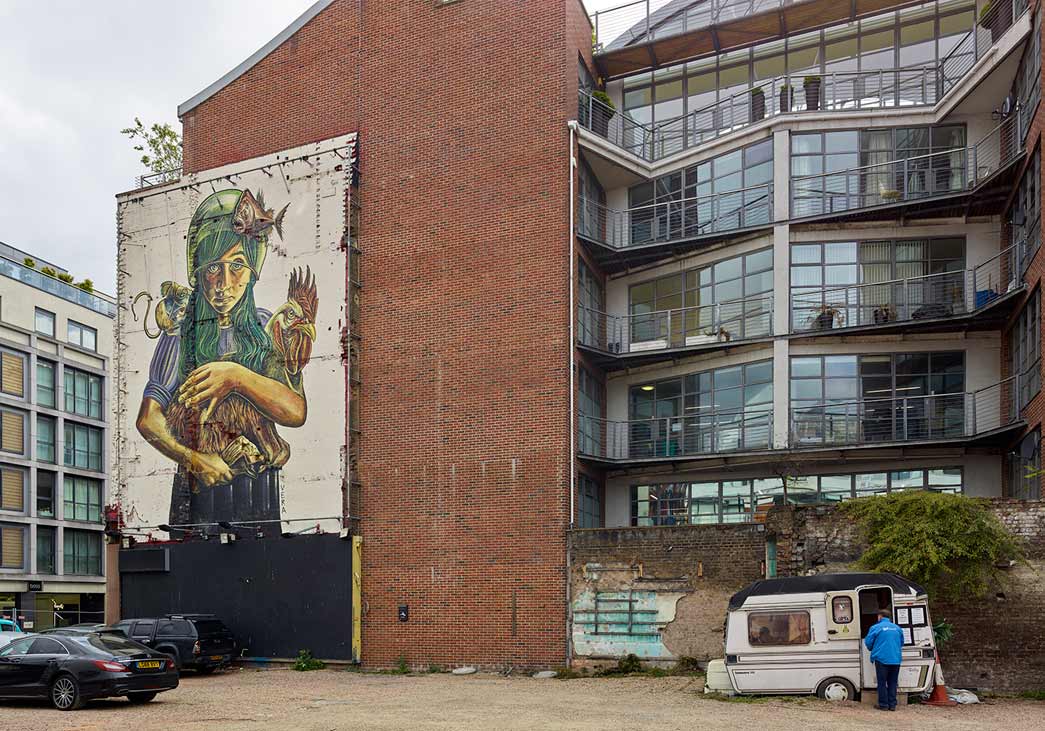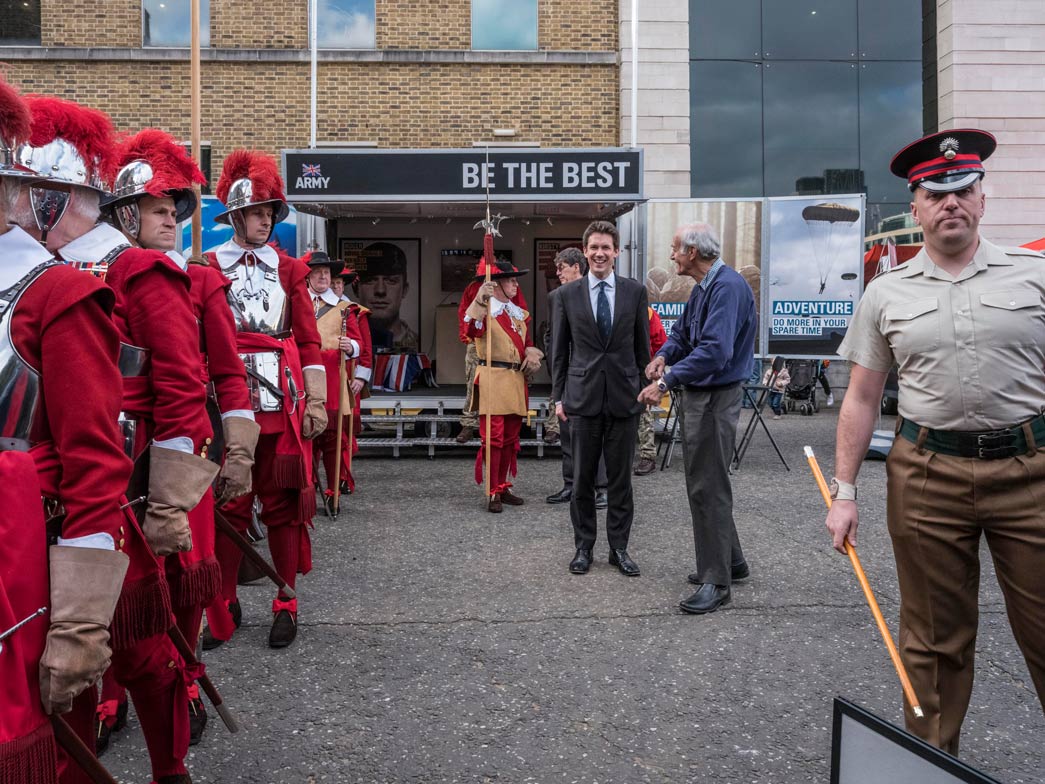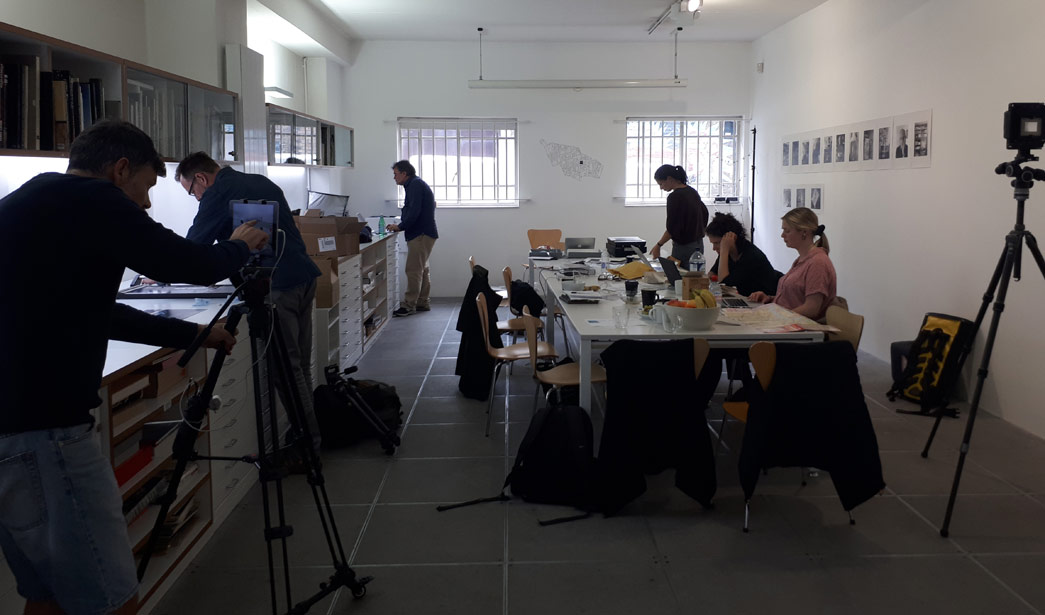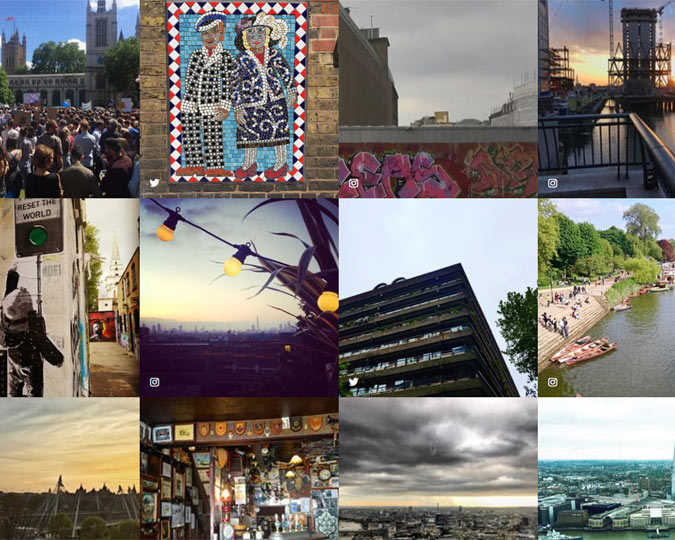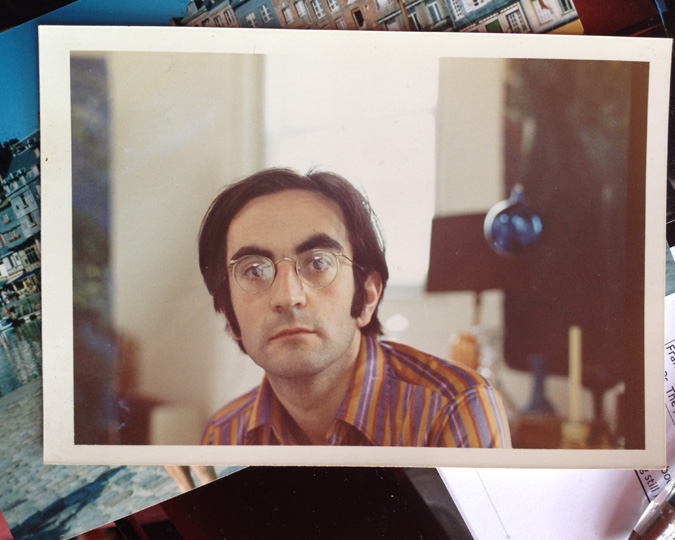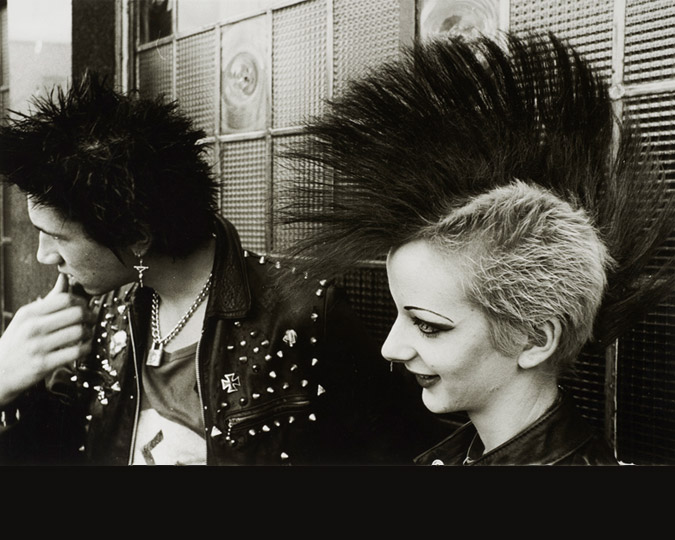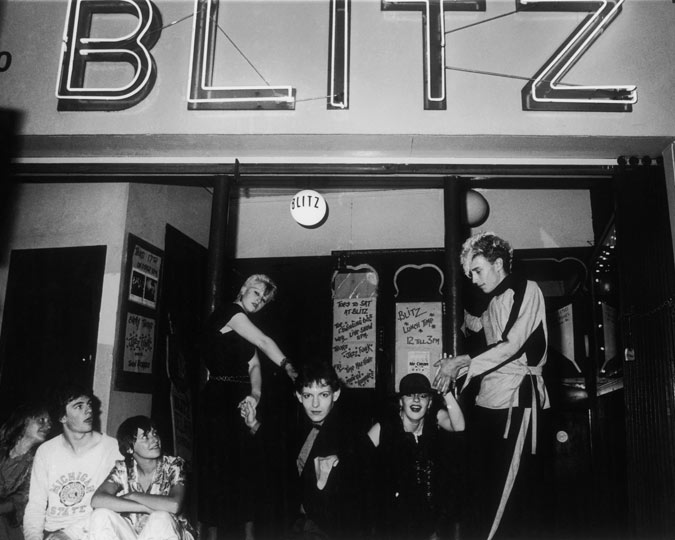Photo agency Magnum and the Museum of London are working together on Live Lab 2017, a unique public display by some of the city's best photographers. Curator Anna Sparham explains how they're hoping to create an ambitious exhibition that captures the spirit of Clerkenwell, from nothing, in just two weeks.
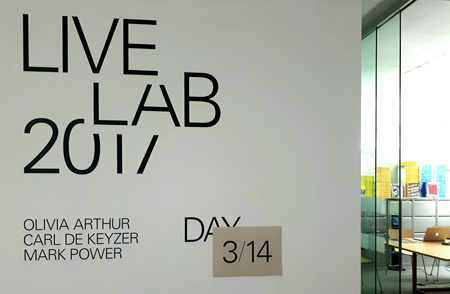
Magnum is an internationally renowned photo agency, marking its 70th anniversary in 2017. To celebrate, Magnum are staging events and exhibitions, including the 'Live Lab 2017' in partnership with the Museum of London from 8-20 May. This ‘Live Lab' aims to generate fresh new photography of London from three photographers, guided by my research. It runs alongside our City Now City Future season, all about exploring life in London in the 21st century.
We hope to share with the public, through social media, physical visits, films, talks and indeed this article, the process of creating a photographic exhibition from scratch. We’ll show the different interests, techniques and approaches taken by each photographer, as we move to our final goal: a pop-up exhibition of the prints in the Magnum Print Room.
We decided to focus on the area around Clerkenwell, home both to Magnum's Gee Street studio and the Museum of London. I set about researching the area and its history, for images and ideas that could inspire the photographers. The geographical boundaries would stretch to King’s Cross in the north, Bloomsbury to the west, the fringes of the City to the south and Hoxton to the east. It's a small area, but dense with history and variety. Clerkenwell was a centre of creativity for centuries, hosting many artisan craftsmen from printers to watchmakers. You can see the way the city changes from night to day, watching Smithfield market's meat porters ending their working ‘day’ as construction workers are already busy and office workers slowly arriving. It's also the home of the planned site of the new Museum of London.
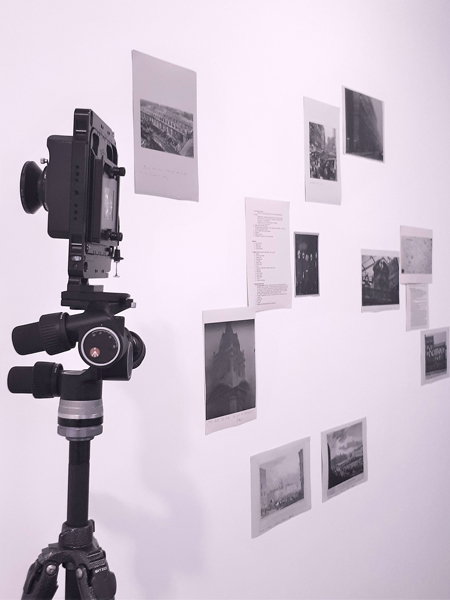
Research images for inspiration in the Lab
My role, as curator, is to work alongside the photographers as they share their images, discuss their progress, and to hang their developing work on the walls of the ‘Lab’. The three photographers are Olivia Arthur, Carl De Keyzer and Mark Power. After months of planning and a flow of emails in recent weeks, the photographers, myself and the rest of the production team met for the first time together on 8 May at the Magnum Print Room. This space was to become the base for the project and quickly transformed into a live-working lab overnight. Printers were brought in. Trays and chemicals for developing. Historic visual resources, Blu-tac and lots of coffee.
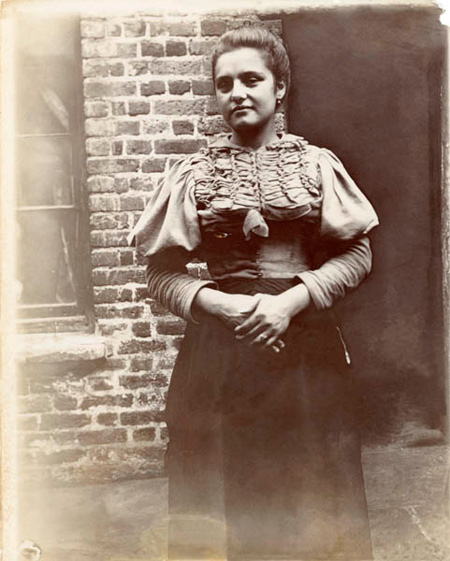
An Italian girl in Saffron Hill, Clerkenwell, 1901
Clerkenwell was known as London's 'Little Italy' in the early 20th century. ID no. IN32025
Olivia Arthur, inspired by the Italian community that had moved to Clerkenwell in the late 19th century, decided to focus on people living or working in the vicinity who represent migration, reflecting connections with the past and the transience of today.
Mark Power’s photographic drive for the urban landscape led to a continued pursuit for photographing the layers, both the literal ones visible in the city's buildings and the metaphorical layers of the area's rich history. He was keen to research the area beforehand, diving into Peter Ackroyd’s 'Clerkenwell Tales'. For Mark, such literature acted as an initial way-finder; a contextual guide that inspired different ways of looking at the area. Mark knew that he wanted to explore the city through long walks, and that chronicling his encounters along the way would work best for him.
Carl De Keyzer began the Live Lab with less preconceived plans - he'd actually been in the Congo during the planning stages, with very limited internet access. He was drawn to the idea of looking for the contrasts in place and people, and finding the candid, surprising elements in the area.
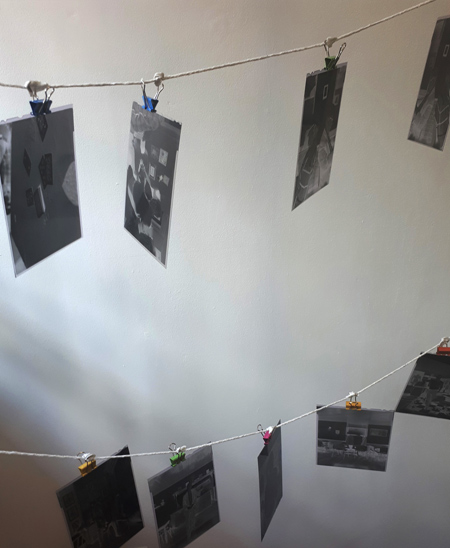
Olivia Arthur's negatives hang out to dry
The first week of the project was naturally heaving with image-making. Each photographer is going about this in their own unique way. Olivia is working with large format film, developing the negatives in the bathroom at Magnum. After processing they are hung out to dry within the lab space itself. Keen to make portraits and capture interior details, Olivia's days have been filled with appointments to meet her subjects, processing and scanning.
Mark and Carl both use the strengths of their medium format digital cameras. Mark's is a technical camera which necessitates the use of a tripod. It has now become a familiar sight to watch Mark carry this around as he ventures out. Both offer immense clarity and detail in the images allowing great potential for enlargement. When he's not shooting, Mark has carefully made inkjet working prints. Carl discovered the joys of Olivia’s own printer to make his working prints, won over by its speed and printing qualities.
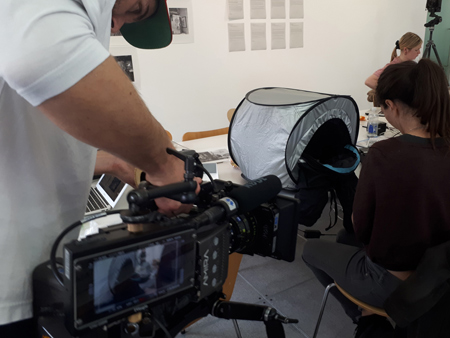
Olivia Arthur loads negatives in the Magnum Live Lab
This is all a new way of working for me, and one with a steep learning curve. In the museum I am usually working with existing images in our collections. When I liaise with an active photographer, it is often at a distance that doesn't allow me to see the work being made, let alone handle it. It's a fantastic experience to see this, and feel the excitement when there is a successful shoot or a brilliant photo emerging for the first time. I’m also witnessing the everyday small catastrophes of lens malfunction or printer ink running dry, or frustrations with not finding the content to photograph on an outing. Each of these matters even more so when time is of the essence over an immensely tight fortnight.
The Lab space has at times been quiet, when photographers are all out or heads down processing, writing or planning. Then there are those moments where the Lab is simply a hive of activity, filled with bustling photographers, visitors, and students.
I have definitely become well-acquainted with Blu-tac of late, as I play my part in transforming the the walls of the Lab, from stark white to lively and colourful. When I'm attempting to curate a group of photographs in the museum, I always have a pile of thumbnail reproductions on the floor or desk in front of me. By sticking the images on the wall and living with them for a few hours, you soon tune into the ones that shine and work best. The ones which talk to each other.
As well as sharing the work during development, the two
week Live Lab culminates with an exhibition of final selected photographs, on show
for six weeks. This is where my role as curator steps up a gear. At present we
have a hang which is very much still a work in progress. By the end of the
second week, the photographers and I will create a hang of their best
work. This means careful selections, juxtapositions, and a chance to test my still-developing skills with a spirit level.
At this half way point, I am so enthused by the imagery which has already been made - testimony to the incredible skills these very different photographers possess. Each remains calm and focused. Each is creating diverse and memorable content from within a rich but relatively small geographical area. All this under the pressure of time and the keen public eye. The coming week will indeed put my own skills further to the test and without doubt teach me so much. Follow the campaign until 20 May on Twitter and Instagram, or come and see the finished photos in the Magnum Print Room display until 14 July 2017.
To hear Anna Sparham and the photographers discuss their work, book tickets for Magnum Live Lab in Conversation on 28 June 2017.








